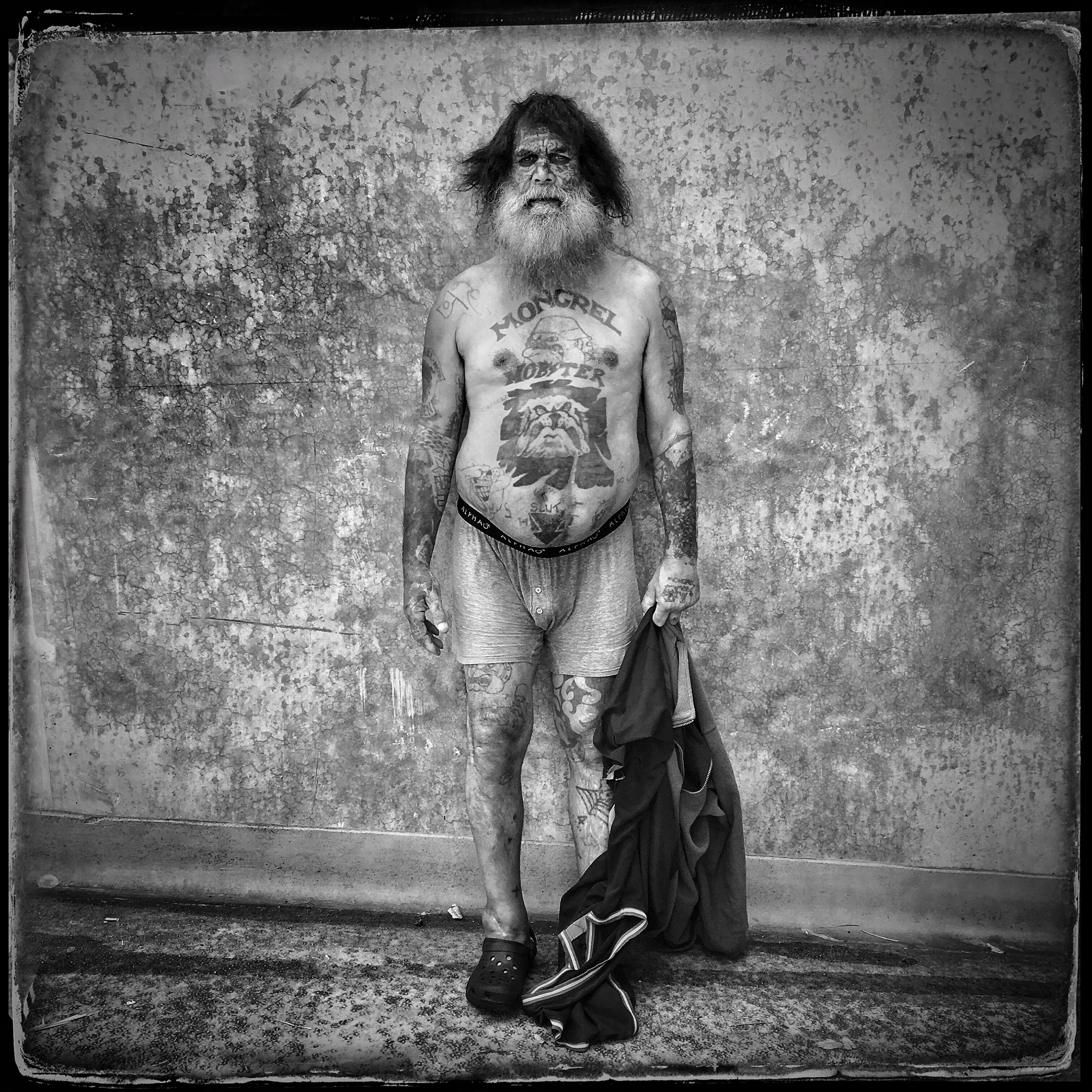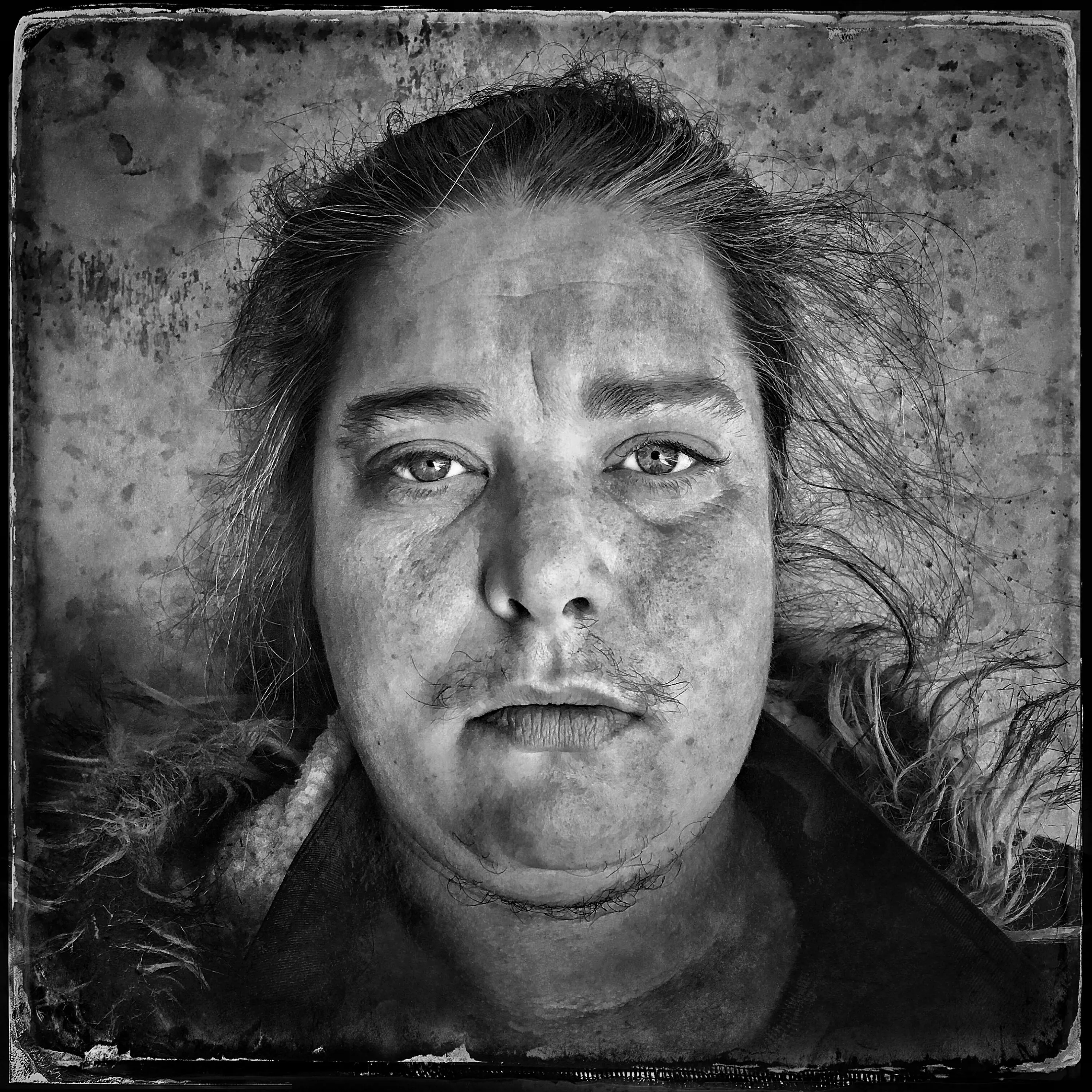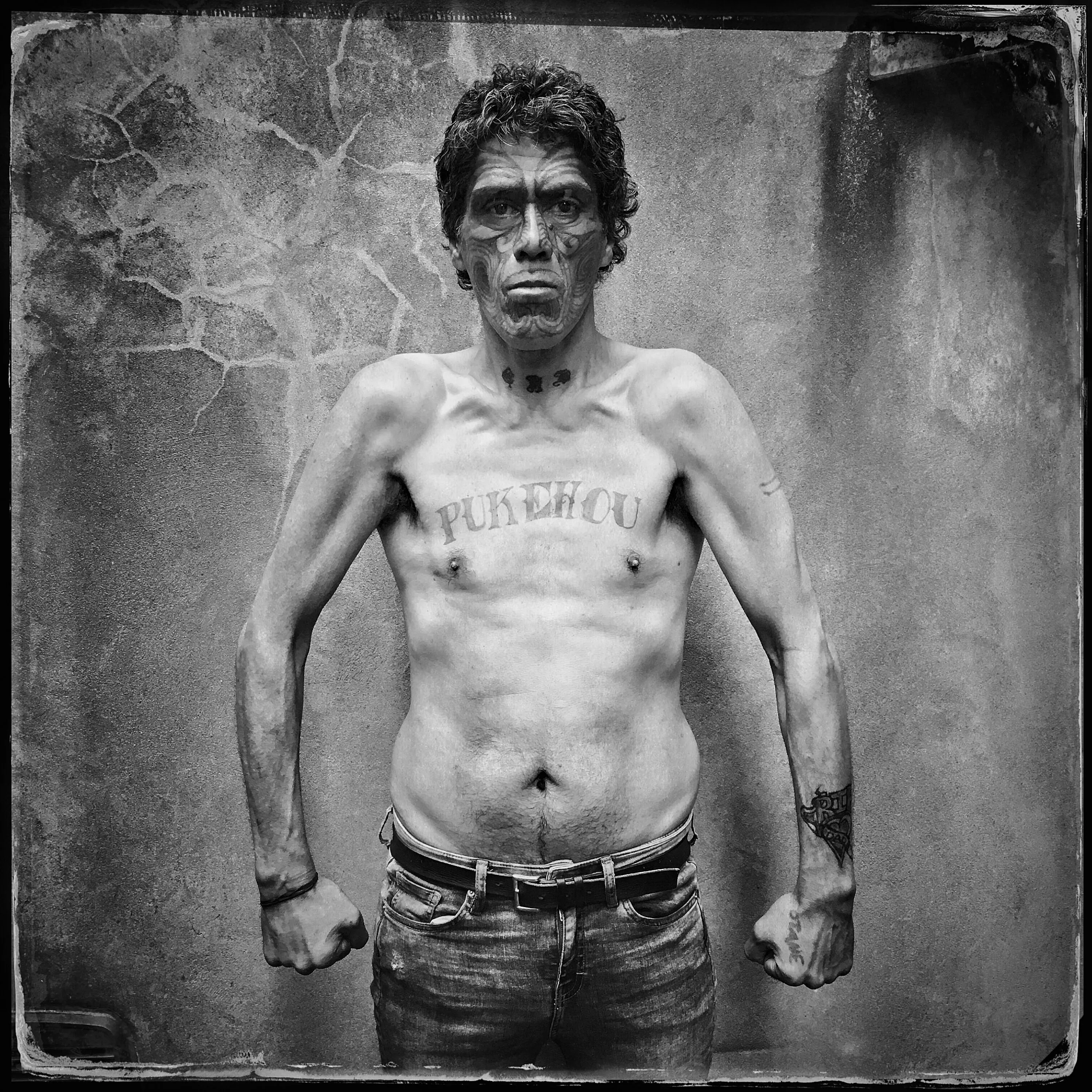John Crawford: Action on homelessness
Written by

The rise of homelessness is impossible to ignore. Across New Zealand there are an increasing amount of people who spend their days, and often nights, on a small patch of pavement watching the world go by. And every day we walk past them unsure of what to do, how to respond or even how to feel. Three years ago, photographer John Crawford decided to stop walking past and start sitting down. This singular action has lead to a body of work that captures the stories and portraits of many of Auckland’s individuals who inhabit the streets. A collection of these striking portraits will be exhibited at the Gow Langsford Gallery from October 14-15 with all donations gifted to the Auckland City Mission.
“I live right in Auckland city,” John explained when asked how it all began, “and every day I would pass these guys sitting in their own patch. I was guilty just like everyone else. You generally feel a bit awkward, maybe give a few coins. I would watch people avoiding them or crossing the road. I decided to do a series of photographs. I started with a guy down the road called Lloyd. I got talking to him, and it turned out he was from Taranaki, like me. He pointed me in the direction of others, and it grew from there.”
John would always sit with the people he approached to photograph and listen to their stories. In many ways, it has been hearing about their lives that has had the most profound impact on him. “Without the story, the photograph means nothing. Sitting and spending time builds trust. You don’t charge in like a bull. You just say gidday, how’re you doing?"
“I didn’t realise the tragedies of people's lives.”
John goes on to explain his approach, "You’ve got a foot in the door just by saying hello. The trick is never to be pushy. Without building instant rapport you’re never going to get people to talk from the heart. Everyone has a story to tell but not everyone is prepared to listen. Once you start to listen there is an outpouring of information about the sadness of their lives. There’s so much I can’t tell…”
The honesty of his photographs allude to the parts of their stories that have been left unspoken. The stories are raw, explains John, and they will affect you.

Stan's nickname is Dokta. He lives out West in his old van with his pug bulldog also called Dokta. “I called her Dokta because it was easy for me to remember".
He is articulate and well spoken. His mother passed away when he was 9. “My whole world collapsed - I had one sister and four brothers, we were all passed on to the Whanau, but no one could handle us. I was taught way back that I was a Hori not a Maori. Me and my younger brother became patched Mongrel Mob members as young teenagers, all our uncles and cousins are with the Mob".
He was a member for 30 years. “I spent 26 years in prison, where all my tats were done. I've seen lots of trouble and shit go down, I've been bashed and stabbed. As you get older you get bullied, there's heaps of power struggles and big wars between chapters, every gang has the same shit bro. I woke up one day and thought I'm finished here".
Now at 57 he calls himself a man of peace and is involved in counselling and helping young, troubled and rebellious women, teaching them new life skills and giving them a chance. This is a far cry from his Mob days where all woman were hated by the gang and treated with total disrespect.

Three days after meeting him in the supermarket, 50 year old Peter met me on the dot at 11am as planned. “Washed my hair and had a shave bro, hope I look ok”.
His full - face Moko tattoo was carved by his friend in Hawkes Bay. “It's all about my Whanau, I'm going to spend Christmas with my mum, sister and my daughter, she's 32 and looks just like me except she's white with black hair. I'm a grandad too now”.
Four generations of his family live in Pukehou - it’s tattooed on his chest. "I was a member of CHB Mongrel Mob for 20 years, got into a bit of trouble, could have got into more. Did 10 years inside, never going back there, keep away from temptation and bad people now, no drugs, no pubs no alcohol.”
Peter suffers from schizophrenia. "The medication makes me sleepy all the time. I used to be into sport - tennis, basketball and rugby league - I trialled for the Junior Kiwis in 1985."
I gave him some money for his bus trip back to the Bay for Christmas …

Amanda is 34 years old and sits on her rug on the pavement in the same street every day and has done for the last 8 years.
"I've had a life of hell. Me and my sister were both abused by our father, I've been stabbed in the stomach when pregnant and nearly died - all over a packet of cigarettes (she lifted her pyjama top under her thick jacket and showed me an ugly 10 inch scar). I've had 2 kids from street relationships - both adopted out and I had a job once as a nurse."
Unlike others in the street, she has a small room in a lodge up the road and benefit money, which covers rent and take - away food.
"I'm trying to forgive my father, I'm a Christian now. I miss my kids ..... there's nothing you can do better in life than give love”.
Using his iphone to capture the images John says removed some of the distance between himself and the individuals he was photographing. “It was ideal because it’s less intrusive and everyone can relate to a phone having a camera in it.” He would often approach people he saw with tatoos and enquire about them. This was always a great conversation starter and is the reason why so many of the photos feature their arms, legs and bodies as well as their faces. These tatoos add another layer of richness to the story of each indvidual.
Initially this started as a personal project, however once the photos started to gain some attention on social media a couple of friends started questioning him on what the people he had photographed were gaining in return. As soon as he realised the power these photographs had to actually make a difference to the lives of those same people and others living in a similar position, the project almost took on a life of it’s own for him. “It was like a turning point. I realised that maybe there was something here that I could do, something that would make a difference for someone else. It very quickly became a personal crusade for me. It is a huge problem, and it’s not going to go away. A lot of it is mental health stuff and it’s scary shit I tell you.”
“I believe there's a fine line between having a good life and having a bad life.”
John’s crusade has become about encouraging action. Awareness is not the issue here, it’s about building compassion and people working out ways that they can help. “This problem is before our eyes every day. These people are struggling to survive on the streets. Some of them are there by choice, some by circumstance, but to me it doesn’t matter. It can happen to any of us. If your partner left and you lost your job and your family has passed on. I believe there's a fine line between having a good life and having a bad life. What I’m hoping to achieve is to make people think about the problem rather than procrastinating and putting it in the too-hard basket.”
What happens from here, he doesn’t know. John does not proclaim to suddenly be an expert on how we deal with homelessness as a society. His hope is that it will trigger others to take another step forward or find a new way to help from a different perspective. “Even if it just makes a tiny difference, that’s good enough for me.” And at the very least he is hoping to raise a hugely generous amount of money to support those that are experts in the field, The Auckland City Mission.
If you're in Auckland, make sure you go along to the exhibition:
On The Street
Photographs by John Crawford
14-15 October
Gow Langsford Gallery, 26 Lorne Street
For those that can't make it, you can support the cause here: https://givealittle.co.nz/fundraiser/onthestreet
Follow John's photography on instagram @johnniecraw
On The Street givealittle page, Auckland City Mission, John Crawford photography

